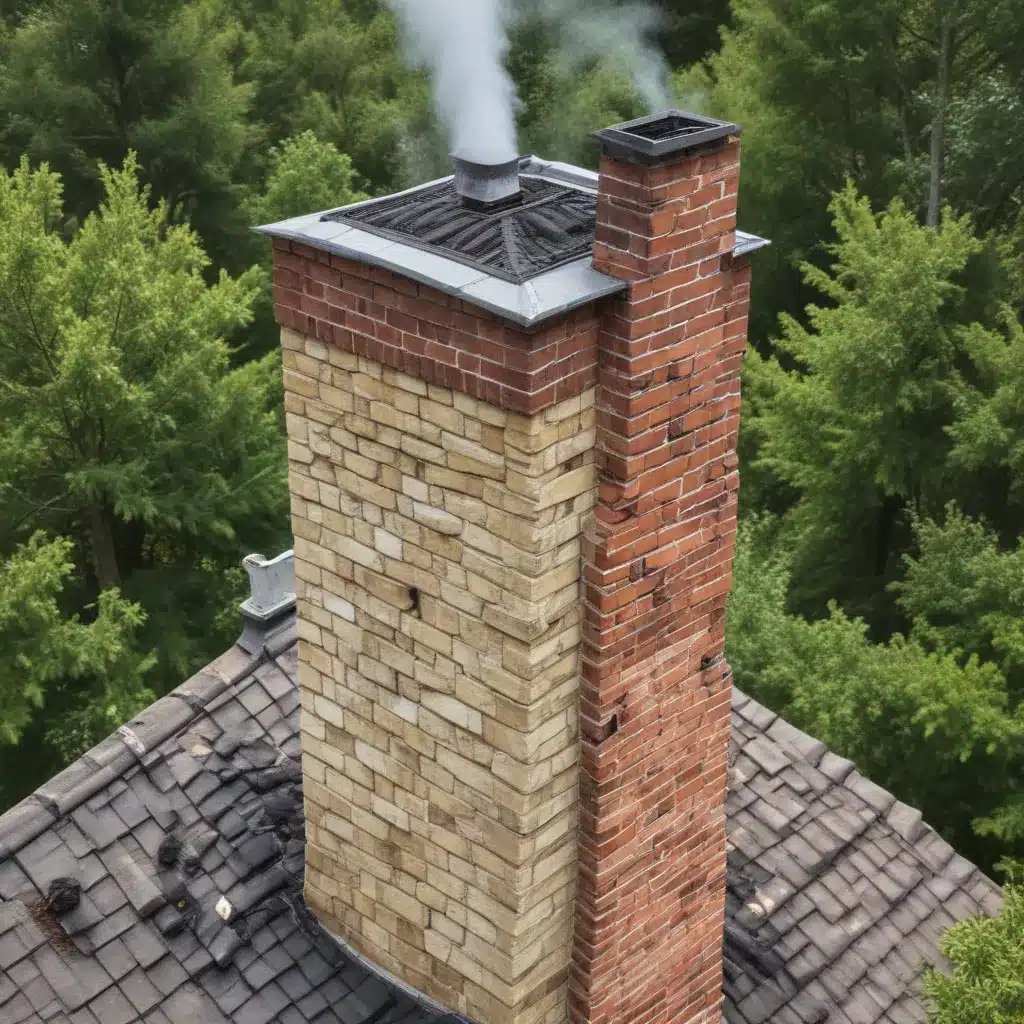
The Importance of Eco-Friendly Chimney and Fireplace Practices
As we strive to live more sustainably and minimize our impact on the environment, it’s crucial to examine every aspect of our homes, including the often-overlooked chimney and fireplace. These essential components of our heating systems can have a significant influence on our carbon footprint and environmental well-being.
Neglecting chimney maintenance can lead to increased emissions and pollution, posing potential fire and safety hazards. By addressing these issues and adopting eco-friendly practices, we can reduce our environmental impact while still enjoying the warmth and ambiance of a cozy fire. In this comprehensive guide, we’ll explore practical tips and in-depth insights to help you maintain your chimney and fireplace in a sustainable manner.
The Environmental Impact of Chimneys and Fireplaces
The combustion of wood in fireplaces is a leading contributor to air pollution, releasing greenhouse gases like carbon dioxide (CO2) and dangerous particulates into the atmosphere. Damaged or poorly maintained chimneys can exacerbate this issue, allowing more smoke and harmful gases to escape into the environment.
When chimneys aren’t properly maintained, they release more pollutants that degrade air quality around homes. This not only contributes to climate change but also poses health risks, particularly for individuals with respiratory conditions. Regular chimney inspections and cleaning can help identify and address these problems, minimizing waste from wood-burning stoves and decreasing emissions that pollute the air.
Furthermore, the impact of climate change on chimney and fireplace maintenance cannot be overlooked. Extreme weather patterns and temperature fluctuations can affect the condition of chimneys, increasing the need for regular upkeep to ensure proper ventilation and prevent safety hazards, such as chimney fires.
Eco-Friendly Chimney and Fireplace Practices
To reduce the environmental footprint of your chimney and fireplace, consider the following sustainable practices:
1. Use Seasoned, Untreated Firewood
Burning untreated, seasoned firewood is a crucial step in minimizing emissions and creosote buildup within your chimney. Seasoned wood, which has been allowed to dry naturally, contains less moisture, resulting in a cleaner burn and reduced particulate matter. Avoid burning treated woods or household trash, as these materials release harmful chemicals into the air.
2. Maintain Your Chimney Regularly
Regular chimney inspections and cleanings are essential to prevent the accumulation of creosote, a flammable substance that can lead to dangerous chimney fires. Proper maintenance also ensures efficient airflow, reducing indoor air pollution caused by harmful emissions. Consider investing in a chimney cap to keep out debris and animals while allowing for proper ventilation.
3. Explore Eco-Friendly Heating Alternatives
While wood-burning fireplaces and stoves can be cozy and charming, they are often inefficient and contribute to air pollution. Explore alternative, eco-friendly heating options, such as:
- Electric Fireplaces: These operate using electricity, emitting zero direct emissions and offering excellent energy efficiency.
- Gas Fireplaces: Compared to wood-burning models, gas fireplaces burn cleaner and produce fewer emissions.
- Pellet Stoves: These efficient appliances use renewable biomass pellets as fuel, reducing reliance on fossil fuels.
- Solar Chimney Technology: Integrating solar-powered chimneys can improve energy efficiency and reduce greenhouse gas emissions.
4. Improve Fireplace Efficiency
Even if you opt to continue using a traditional wood-burning fireplace, there are steps you can take to enhance its efficiency and minimize environmental impact:
- Install a fireplace insert or wood stove, which captures and circulates more heat, improving overall efficiency.
- Use a damper to control airflow, preventing the escape of warm air up the chimney when the fireplace is not in use.
- Consider upgrading to an energy-efficient model, such as a high thermal mass stove, which can effectively store and radiate heat.
5. Reduce, Reuse, and Recycle
Adopt sustainable waste management practices to further reduce your environmental footprint. Minimize waste by recycling materials like metal, glass, and paper, and compost any organic matter, such as food scraps and yard waste, to divert it from landfills where it would contribute to methane emissions.
The Benefits of Eco-Friendly Chimney and Fireplace Use
By embracing these eco-friendly practices, you can enjoy the warmth and ambiance of your fireplace or stove while significantly reducing your carbon footprint and promoting a cleaner, more sustainable home environment. Some of the key benefits include:
-
Reduced Greenhouse Gas Emissions: Minimizing the use of fossil fuels and adopting clean energy alternatives for heating can dramatically lower your carbon footprint, contributing to the fight against climate change.
-
Improved Indoor Air Quality: Proper chimney maintenance and the use of eco-friendly fuels can enhance indoor air quality, creating a healthier living environment, especially for those with respiratory issues.
-
Enhanced Energy Efficiency: Upgrading to energy-efficient fireplace and heating systems can lead to substantial cost savings on your utility bills while reducing overall energy consumption.
-
Increased Safety: Regular chimney inspections and cleaning help prevent dangerous situations, such as chimney fires, ensuring the safe operation of your heating appliances.
-
Environmental Stewardship: By making conscious choices to reduce your environmental impact, you set an example and inspire others to adopt more sustainable practices in their homes and communities.
Remember, every small step you take to embrace eco-friendly chimney and fireplace use can have a meaningful impact on the planet. Start making sustainable choices today and enjoy the benefits of a greener, more energy-efficient home.
Conclusion
Maintaining your chimney and fireplace in an environmentally responsible manner is a crucial part of reducing your carbon footprint and promoting a sustainable lifestyle. By adopting eco-friendly practices, such as using seasoned firewood, regularly inspecting and cleaning your chimney, and exploring alternative heating options, you can minimize emissions, improve indoor air quality, and contribute to the fight against climate change.
Remember, the choices you make regarding your home’s heating systems have far-reaching implications. Embrace the opportunity to make a positive impact and inspire others to join you in creating a cleaner, more sustainable future. For personalized assistance or to schedule a professional chimney inspection, don’t hesitate to contact the Roofers in Northampton team. Together, we can work towards a greener, more energy-efficient home and a healthier planet.

